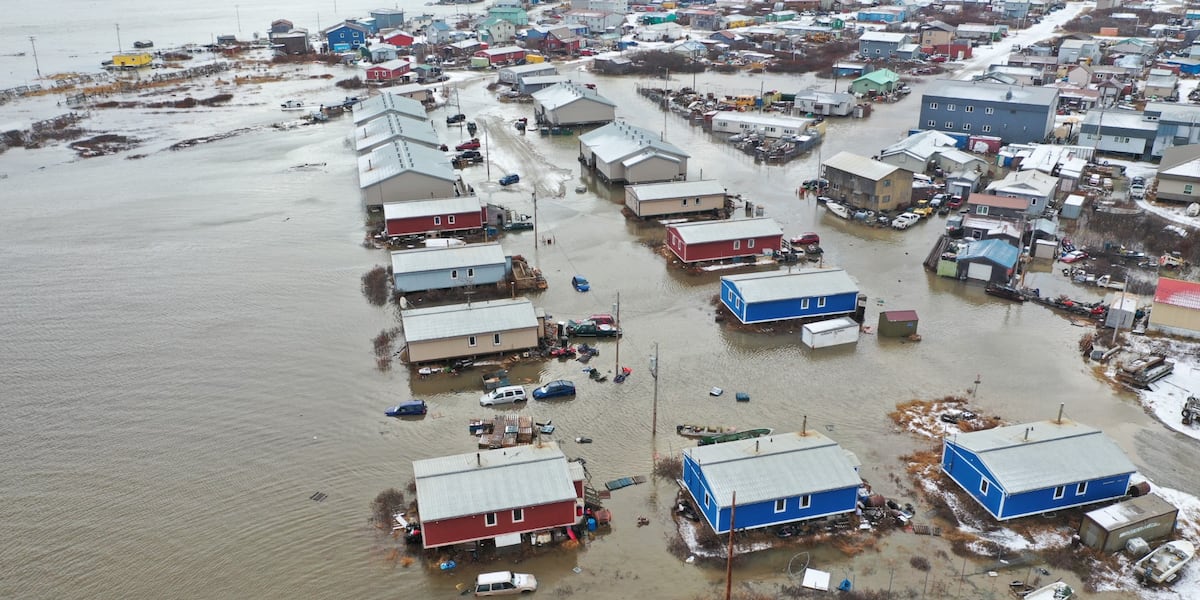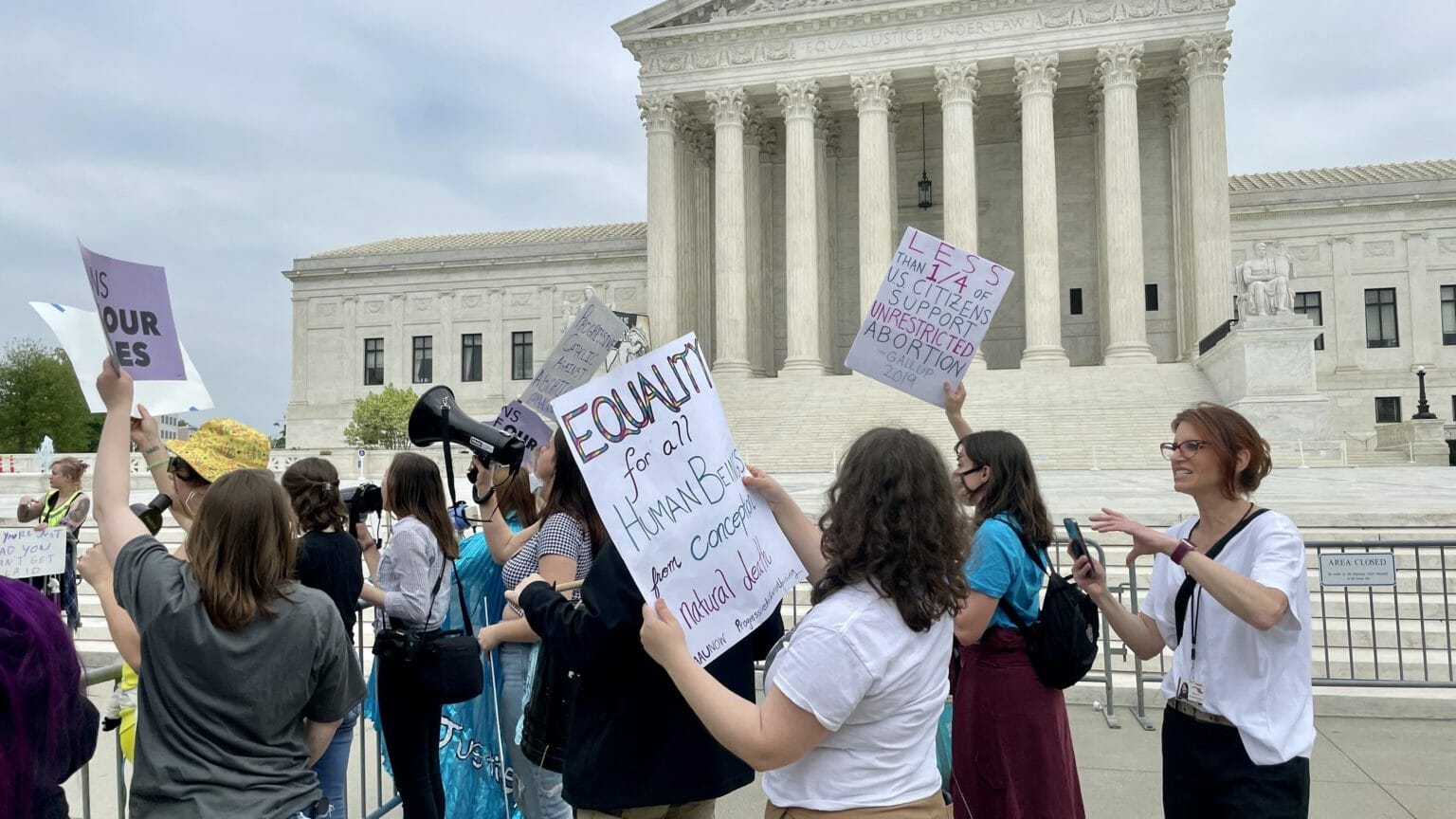Alaska
Nationally, the battle over abortion rights hasn’t quieted down — but in Alaska abortion remains legal
/cloudfront-us-east-1.images.arcpublishing.com/gray/6FAXONYNXBFDFDF4GASJSYIBEM.bmp)
ANCHORAGE, Alaska (KTUU) – Friday marked the one-year anniversary of the U.S. Supreme Court decision that struck down laws guaranteeing abortion access in America. The decision left some states rushing to craft their own abortion laws, but in Alaska there hasn’t been a change.
Although abortion rights aren’t specifically mentioned, the Alaska constitution has a privacy clause that protects medical decisions, and the Alaska Supreme Court has ruled more than once that it includes the right to an abortion.
Planned Parenthood Alliance Advocate Rose O’Hara-Jolley is among those hoping to expand abortion rights in Alaska.
“We want everyone to have more access to all health care decisions they need to make in this state,” O’Hara-Jolley said.
Planned Parenthood is currently involved in a lawsuit with the state over who can provide abortion services.
“Our top priority is expanding equitable access to abortion across the state,” O’Hara-Jolley said. “In a state with so many rural communities that lack access to health care in general, we are working to continue to expand access to abortions and reproductive health care.”
Jim Minnery with the Alaska Family Council is fighting for the opposite.
“Abortion is the taking of an unborn life so it’s an obvious answer,” Minnery said. “Of course we would like to see abortion be unthinkable.”
The Alaska Family Council backed a ballot proposition in November to call a Constitutional Convention — which could have resulted in abortion restrictions being put in place. But Alaskans voted it down. Minnery said the Council would continue to push for an abortion ban and also offer more support to women who are considering abortions.
“It’s like the civil rights, so you don’t stop fighting for the rights of those who are most vulnerable,” Minnery said. “So we will continue, of course, to protect innocent unborn but also to protect the rights of women to be informed when they make that hard decision.”
According to data from the State Department of Health, the number of abortions has stayed relatively steady in recent years. In 2017 — the first year state data is available — the number of abortions reported in Alaska was 1,255. The most recent data from 2021 shows 1,226 abortions reported that year.
Other state data from 2021 show most people who had abortions — 86% of the total number — were in their 20s and 30s. The majority were white (53%) and experiencing a first-time abortion (66%). The majority of terminations occurred between 7-9 weeks of pregnancy.
It’s a picture that could change some time in the future — but for now, many say, that isn’t likely.
Copyright 2023 KTUU. All rights reserved.

Alaska
Federal disaster declaration approved for Northwest Alaska flooding

ANCHORAGE, Alaska (KTUU) – President Joe Biden announced the approval of federal disaster assistance on Thursday for recovery efforts in areas that sustained damage from flooding and storms in October 2024.
Those areas include the Bering Strait Regional Educational Attendance Area (REAA) and the Northwest Arctic Borough area where many structures were damaged by a severe storm from Oct. 20-23, 2024.

In a press release, FEMA announced that federal funding is available on a cost-sharing basis for emergency work to the state of Alaska, tribal and eligible local governments, and certain private nonprofit organizations.
The announcement comes just a few days after Biden released the major disaster declaration approval for the August Kwigillingok flooding.
See a spelling or grammar error? Report it to web@ktuu.com
Copyright 2025 KTUU. All rights reserved.
Alaska
Arctic hotspots study reveals areas of climate stress in Northern Alaska and Siberia

Ecological warning lights have blinked on across the Arctic over the last 40 years, according to new research, and many of the fastest-changing areas are clustered in Siberia, the Canadian Northwest Territories, and Alaska.
An analysis of the rapidly warming Arctic-boreal region, published in Geophysical Research Letters, provides a zoomed-in picture of ecosystems experiencing some of the fastest and most extreme climate changes on Earth.
Many of the most climate-stressed areas feature permafrost, or ground that stays frozen year-round, and has experienced both severe warming and drying in recent decades.
To identify these “hotspots,” a team of researchers from Woodwell Climate Research Center, the University of Oslo, the University of Montana, the Environmental Systems Research Institute (Esri), and the University of Lleida used more than 30 years of geospatial data and long-term temperature records to assess indicators of ecosystem vulnerability in three categories: temperature, moisture, and vegetation.
Building on assessments like the NOAA Arctic Report Card, the research team went beyond evaluating isolated metrics of change and looked at multiple variables at once to create a more complete, integrated picture of climate and ecosystem changes in the region.
“Climate warming has put a great deal of stress on ecosystems in the high latitudes, but the stress looks very different from place to place and we wanted to quantify those differences,” said Dr. Jennifer Watts, Arctic program director at Woodwell Climate and lead author of the study.
“Detecting hotspots at the local and regional level helps us not only to build a more precise picture of how Arctic warming is affecting ecosystems, but to identify places where we really need to focus future monitoring efforts and management resources.”
The team used spatial statistics to detect “neighborhoods,” or regions of particularly high levels of change during the past decade.
“This study is exactly why we have developed these kinds of spatial statistic tools in our technology. We are so proud to be working closely with Woodwell Climate on identifying and publishing these kinds of vulnerability hotspots that require effective and immediate climate adaptation action and long-term policy,” said Dr. Dawn Wright, chief scientist at Esri. “This is essentially what we mean by the ‘Science of Where.’”
The findings paint a complex and concerning picture.
The most substantial land warming between 1997–2020 occurred in the far eastern Siberian tundra and throughout central Siberia. Approximately 99% of the Eurasian tundra region experienced significant warming, compared to 72% of Eurasian boreal forests.
While some hotspots in Siberia and the Northwest Territories of Canada grew drier, the researchers detected increased surface water and flooding in parts of North America, including Alaska’s Yukon-Kuskokwim Delta and central Canada. These increases in water on the landscape over time are likely a sign of thawing permafrost.
-

Warming severity “hotspots” in Arctic-boreal region between 1997-2020 were detected by analyzing multiple variables including satellite imagery and long-term temperature records. Watts et al., 2025, Geophysical Research Letters. Credit: Christina Shintani / Woodwell Climate Research Center
-

Map of areas of severe to extremely severe drying in the Arctic-boreal region. Drying severity was determined by analyzing multiple variables from the satellite record. Watts et al., 2025, Geophysical Research Letters. Credit: Christina Shintani / Woodwell Climate Research Center
-

Map of areas that experienced vegetation climate stress in the Arctic-boreal region between 1997-2020 as detected by multiple variables from the satellite record. Watts et al., 2025, Geophysical Research Letters. Credit: Christina Shintani / Woodwell Climate Research Center
Among the 20 most vulnerable places the researchers identified, all contained permafrost.
“The Arctic and boreal regions are made up of diverse ecosystems, and this study reveals some of the complex ways they are responding to climate warming,” said Dr. Sue Natali, lead of the Permafrost Pathways project at Woodwell Climate and co-author of the study.
“However, permafrost was a common denominator—the most climate-stressed regions all contained permafrost, which is vulnerable to thaw as temperatures rise. That’s a really concerning signal.”
For land managers and other decisionmakers, local and regional hotspot mapping like this can serve as a more useful monitoring tool than region-wide averages. Take, for instance, the example of COVID-19 tracking data: maps of county-by-county wastewater data tend to be more helpful tools to guide decision making than national averages, since rates of disease prevalence and transmission can vary widely among communities at a given moment in time.
So, too, with climate trends: local data and trend detection can support management and adaptation approaches that account for unique and shifting conditions on the ground.
The significant changes the team detected in the Siberian boreal forest region should serve as a wakeup call, said Watts.
“These forested regions, which have been helping take up and store carbon dioxide, are now showing major climate stresses and increasing risk of fire. We need to work as a global community to protect these important and vulnerable boreal ecosystems, while also reining in fossil fuel emissions.”
More information:
Regional Hotspots of Change in Northern High Latitudes Informed by Observations From Space, Geophysical Research Letters (2025). DOI: 10.1029/2023GL108081
Provided by
Woodwell Climate Research Center
Citation:
Arctic hotspots study reveals areas of climate stress in Northern Alaska and Siberia (2025, January 16)
retrieved 16 January 2025
from https://phys.org/news/2025-01-arctic-hotspots-reveals-areas-climate.html
This document is subject to copyright. Apart from any fair dealing for the purpose of private study or research, no
part may be reproduced without the written permission. The content is provided for information purposes only.
Alaska
Alaska Airlines Flight Attendant Gets Fired For Twerking On The Job

A flight attendant’s viral TikTok video ended up costing her job. Nelle Diala, who was working as a flight attendant with Alaska Airlines for over six months was reportedly fired from her job after recording a twerking video while at work, the New York Post reported. After losing her job for “violating” the airline’s “social media policy”, Diala set up a GoFundMe page for financial support. The twerking and dancing video, posted by Diala on her personal social media account, went viral on TikTok and Instagram. The video was captioned, “ghetto bih till i D-I-E, don’t let the uniform fool you.”
After being fired, Diala reposted the twerking video with the new caption: “Can’t even be yourself anymore, without the world being so sensitive. What’s wrong with a little twerk before work, people act like they never did that before.” She added the hashtag #discriminationisreal.
According to Diala’s GoFundMe page, she posted the “lighthearted video” during a layover. The video was shot in an empty aircraft. She wrote, “It was a harmless clip that was recorded at 6 am while waiting 2 hours for pilots. I was also celebrating the end of probation.”
“The video went viral overnight, but instead of love and support, it brought unexpected scrutiny. Although it was a poor decision on my behalf I didn’t think it would cost me my dream job,” she added.
Also Read: To Wi-Fi Or Not To Wi-Fi On A Plane? Pros And Cons Of Using Internet At 30,000 Feet
Talking about being “wrongfully fired”, she said, “My employer accused me of violating their social media policy. I explained that the video wasn’t intended to harm anyone or the company, but they didn’t want to listen. Without warning, they terminated me. No discussion, no chance to defend myself-and no chance for a thorough and proper investigation.”
The seemingly “harmless clip” has led Diala to lose her “dream job”. She shared, “Losing my job was devastating. I’ve always been careful about what I share online, and I never thought this video, which didn’t even mention the airline by name, would cost me my career. Now, I am trying to figure out how to move forward.”
-
/cdn.vox-cdn.com/uploads/chorus_asset/file/25822586/STK169_ZUCKERBERG_MAGA_STKS491_CVIRGINIA_A.jpg)
/cdn.vox-cdn.com/uploads/chorus_asset/file/25822586/STK169_ZUCKERBERG_MAGA_STKS491_CVIRGINIA_A.jpg) Technology1 week ago
Technology1 week agoMeta is highlighting a splintering global approach to online speech
-

 Science5 days ago
Science5 days agoMetro will offer free rides in L.A. through Sunday due to fires
-
/cdn.vox-cdn.com/uploads/chorus_asset/file/25821992/videoframe_720397.png)
/cdn.vox-cdn.com/uploads/chorus_asset/file/25821992/videoframe_720397.png) Technology1 week ago
Technology1 week agoLas Vegas police release ChatGPT logs from the suspect in the Cybertruck explosion
-

 Movie Reviews1 week ago
Movie Reviews1 week ago‘How to Make Millions Before Grandma Dies’ Review: Thai Oscar Entry Is a Disarmingly Sentimental Tear-Jerker
-

 News1 week ago
News1 week agoPhotos: Pacific Palisades Wildfire Engulfs Homes in an L.A. Neighborhood
-

 Education1 week ago
Education1 week agoFour Fraternity Members Charged After a Pledge Is Set on Fire
-

 Business1 week ago
Business1 week agoMeta Drops Rules Protecting LGBTQ Community as Part of Content Moderation Overhaul
-

 Politics1 week ago
Politics1 week agoTrump trolls Canada again, shares map with country as part of US: 'Oh Canada!'












